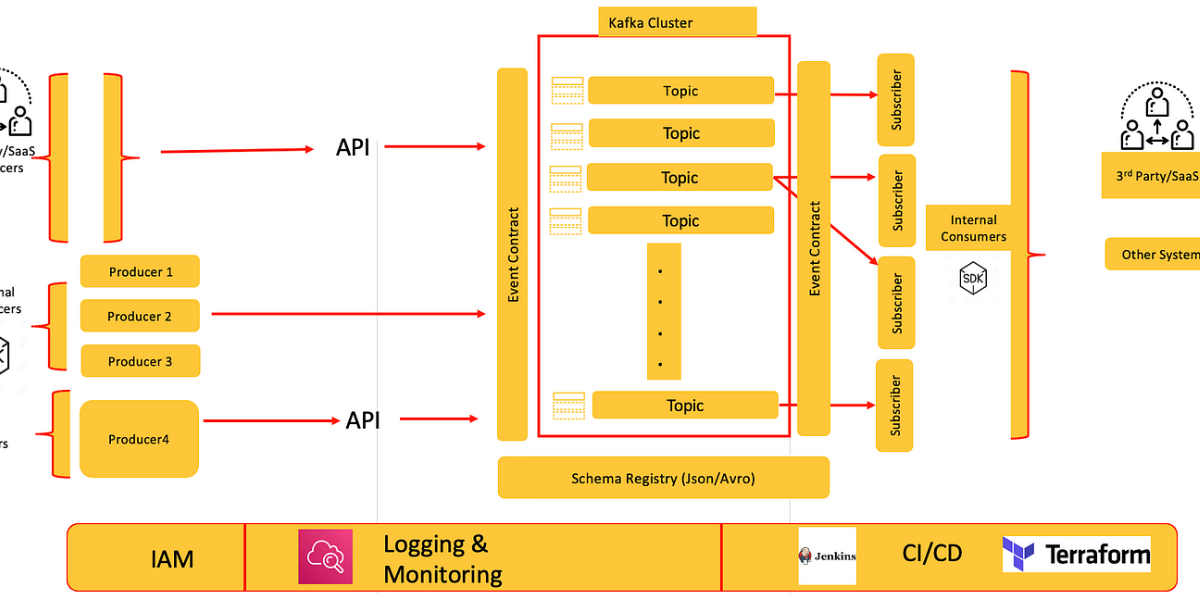
In today’s fast-paced digital landscape, businesses are constantly seeking ways to optimize their operations and gain a competitive edge. Real-time data integration has emerged as a pivotal solution, enabling organizations to streamline processes and make data-driven decisions instantaneously. At the heart of this transformative capability lies event-driven architectures (EDA), which revolutionize the way data is processed, analyzed, and acted upon. In this comprehensive guide, we delve into the intricacies of real-time data integration, exploring how event-driven architectures empower businesses to harness the full potential of their data streams.
Understanding Real-Time Data Integration
Real-time data integration refers to the seamless flow of data from various sources to target systems in near real-time, ensuring that information is always up-to-date and readily accessible for analysis and action. Unlike traditional batch processing methods, which involve periodic data updates, real-time integration enables instant data transfer and processing, allowing businesses to respond swiftly to changing market dynamics and emerging opportunities.
The Importance of Timely Data Insights
In today’s hyper-competitive business environment, the ability to access timely insights is paramount. Real-time data integration facilitates the rapid ingestion, processing, and analysis of data, enabling organizations to derive actionable insights and make informed decisions on the fly. Whether it’s monitoring customer interactions, tracking market trends, or detecting anomalies in operational processes, real-time data integration empowers businesses to stay ahead of the curve and capitalize on emerging opportunities.
Leveraging Event-Driven Architectures
At the core of real-time data integration lies event-driven architectures (EDA), which represent a paradigm shift in data processing. Unlike traditional request-response models, where data processing is triggered by user queries or predefined schedules, event-driven architectures operate based on the occurrence of events or changes in data state. This event-driven approach enables instantaneous data processing and action, ensuring that businesses can react in real time to critical events and opportunities.
Benefits of Event-Driven Architectures
Event-driven architectures offer a myriad of benefits for organizations seeking to enhance their real-time data integration capabilities:
- Improved Responsiveness: By processing events in real time, businesses can react promptly to changing conditions and seize opportunities as they arise.
- Scalability: Event-driven architectures are inherently scalable, allowing organizations to handle large volumes of events and adapt to fluctuating workloads with ease.
- Flexibility: Event-driven architectures support a wide range of use cases, from real-time analytics to event-driven microservices, making them highly versatile and adaptable to diverse business needs.
- Reduced Latency: With event-driven architectures, data processing occurs instantaneously, minimizing latency and ensuring that insights are delivered in real time.
Implementing Real-Time Data Integration: Best Practices
While the benefits of real-time data integration are clear, implementing an event-driven architecture requires careful planning and execution. Here are some best practices to consider:
Define Clear Use Cases
Before embarking on an event-driven architecture initiative, it’s essential to identify clear use cases and business objectives. Whether it’s real-time analytics, operational monitoring, or event-driven automation, defining specific use cases will guide the design and implementation process.
Choose the Right Technologies
Selecting the appropriate technologies is crucial for the success of your event-driven architecture. Evaluate different event broker platforms, stream processing frameworks, and data integration tools to find the ones that best align with your requirements in terms of scalability, reliability, and performance.
Design for Resilience and Scalability
When designing your event-driven architecture, prioritize resilience and scalability to ensure seamless operation under varying conditions. Implement fault-tolerant mechanisms, such as data replication and redundancy, and design for horizontal scalability to accommodate growing workloads.
Ensure Data Quality and Governance
Maintaining data quality and governance is paramount in real-time data integration. Implement data validation and cleansing processes to ensure the accuracy and reliability of incoming events, and establish clear governance policies to govern data access and usage.
Monitor and Iterate
Continuous monitoring and iteration are essential for optimizing your event-driven architecture over time. Implement robust monitoring and logging mechanisms to track system performance and identify bottlenecks, and leverage insights gained to iterate and improve your architecture continuously.
Final Words
Real-time data integration powered by event-driven architectures represents a game-changer for businesses seeking to unlock the full potential of their data assets. By embracing the principles of real-time processing and event-driven workflows, organizations can gain a competitive edge in today’s data-driven landscape, driving innovation, and fostering growth. With the right strategies, technologies, and best practices in place, businesses can harness the power of real-time data integration to streamline processes, enhance decision-making, and unlock new opportunities for success.
Commonly Asked Questions
Q1: How does real-time data integration differ from traditional batch processing methods?
A1: Unlike traditional batch processing, which involves periodic updates and processing of data, real-time data integration enables instant data transfer and processing, ensuring that information is always up-to-date and readily accessible for analysis and action.
Q2: What are some key components of event-driven architectures?
A2: Event-driven architectures comprise event producers, event brokers, event consumers, and event processing logic, which work together to facilitate seamless data processing and event-driven workflows.
Q3: What are the benefits of implementing real-time data integration?
A3: Implementing real-time data integration offers benefits such as improved responsiveness, scalability, flexibility, and reduced latency, enabling organizations to react promptly to changing conditions and seize opportunities in real time.
Q4: How can organizations ensure the success of their event-driven architecture initiatives?
A4: Organizations can ensure the success of their event-driven architecture initiatives by defining clear use cases, choosing the right technologies, designing for resilience and scalability, ensuring data quality and governance, and continuously monitoring and iterating on their architectures.
Q5: What role does event processing logic play in event-driven architectures?
A5: Event processing logic encompasses the business rules and logic applied to incoming events to determine the appropriate actions or responses, enabling organizations to automate workflows, trigger alerts, and drive real-time decision-making.
Advertisement








